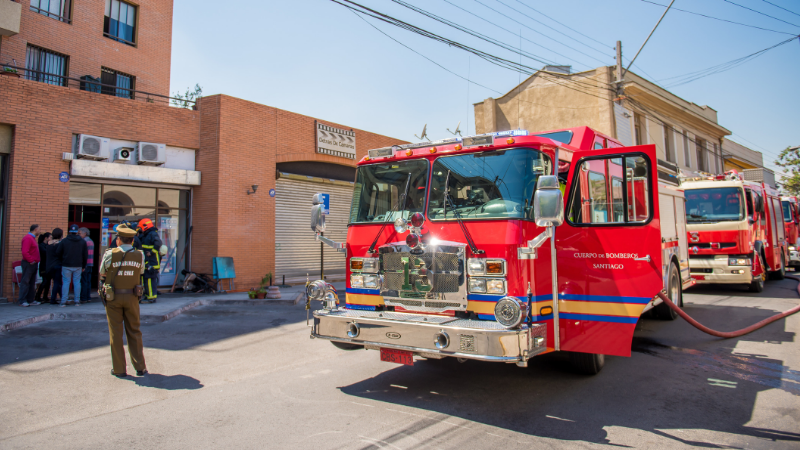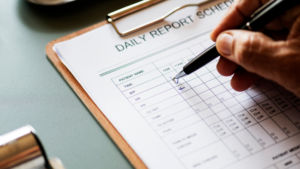
As a successful business owner, you don't want to think about your operations being interrupted by a natural disaster or other unexpected event. Yet the possibility is a real one.
According to the Insurance Information Institute, 91 natural catastrophes occurred in the United States in 2016, totaling $23.8 billion in insured losses. But natural catastrophes represent just a portion of the crises that your business could face. Although you may not be located in an area prone to hurricanes, blizzards, tornadoes, floods, earthquakes, mudslides, or wildfires, you still need to consider the possibility of power outages, civil unrest, terrorism, cyber attacks, fire, data breaches, illness epidemics, and other potential hazards. Fortunately, there are many ways you can prepare your business for an emergency.*
How businesses are affected by natural disasters
As reported by preparemybusiness.org, a website created by the Small Business Administration (SBA) and Agility Recovery Solutions, approximately 40% to 60% of small businesses never recover from a disaster. For this reason, it is in the best interest of every business to identify potential risks and develop a plan to address them — before a crisis hits. Many resources are available to assist business owners in developing a disaster preparedness program.
What is a disaster preparedness program?
A disaster preparedness program is a plan, either self-directed or guided by an organization, that enables business owners to prepare themselves, their employees, and their businesses for the possibility of a natural or man-made disaster.
Organizations such as the Federal Emergency Management Agency (FEMA), the Small Business Administration (SBA), and state governments provide disaster assistance for damages to small businesses located in declared disaster areas.
Steps to implement a disaster preparedness program
Following are five steps that will help you create a disaster preparedness program, as outlined by ready.gov, a national public service campaign designed to educate Americans about preparing for and responding to natural and man-made disasters.
Step 1: Program Management. In many cases, there are minimum regulations that govern how certain businesses manage risk, but as a business owner you will need to determine whether the minimums are enough. As ready.gov states, "Many risks cannot be insured, so a preparedness program may be the only means of managing those risks." Management commitment to a preparedness program, as well as a written preparedness policy and oversight committee, may be critical to ensuring your business's longevity.

Step 2: Planning. This step should include the creation of a "risk assessment" that identifies all potential risks and hazards for your business, with ideas for mitigating their impact. It should highlight threats and hazards that are considered "probable," as well as any that could cause injury, property damage, business disruption, or environmental impact. Another critical document is the "business impact analysis," which details sensitive or critical processes as well as the financial and operational impacts that would occur due to disruption of those processes.
Step 3: Implementation. In this step, committee members identify and assess resources, draft written plans, develop a system to manage incidents, and train employees as needed. Several key documents contribute to successful program implementation, including crisis communications, emergency response, and business continuity plans.
Step 4: Testing & Exercises. To evaluate the program's effectiveness, including the success of employee training, management should run tests and drills to see what works and note opportunities for improvement.
Step 5: Program Improvement. During testing or an actual incident, weaknesses in the program are likely to be revealed. They should be documented, along with lessons learned and strategies for addressing such problems in the future.
Other disaster preparedness resources
The Small Business Administration (sba.gov) offers a number of resources designed to help small businesses shore up their emergency preparedness, including links to templates and worksheets that will help you gather the data you need to put together the various written documents. The SBA's Disaster Preparedness and Recovery Plan outlines the various ways in which the SBA can assist businesses recovering from disasters.
The SBA's main form of support for businesses is the Disaster Loan Program. The organization has two types of disaster loans designed specifically for small business owners:
- The SBA Business Physical Disaster Loan provides loans of up to $2 million to help businesses and nonprofit organizations within a disaster area repair and replace real property, machinery, equipment, fixtures, and leasehold improvements.
- The Economic Injury Disaster Loan offers up to $2 million in loans to help small businesses, small agricultural cooperatives, and certain nonprofit organizations that suffer substantial economic distress because of a disaster. Loan proceeds can be used to meet financial obligations and working capital needs that could have been met if a disaster had not occurred.
The American Red Cross also provides resources for small businesses that are preparing for the possibility of disasters and emergencies. American Red Cross Ready Rating™ is a self-guided online program designed to help member businesses, organizations, and schools assess their level of emergency preparedness. The core of the program is a 123-point assessment that is used to gauge one's level of preparedness. Members also have access to a variety of online tools and resources to help create and refine a disaster preparedness plan. Examples include a hazard vulnerability assessment worksheet, an emergency response notification procedures document, and a damage assessment form. Visit readyrating.org to view the program.
Preparemybusiness.org hosts a variety of sources on disaster preparedness for business owners, including:
- Downloadable educational information on how to prepare your business for a disaster
- An archive of webinars to help you plan your disaster preparedness and recovery strategy
- A framework of testing strategies to implement in order to assess your disaster preparedness
- Resources from the SBA on the types of disaster assistance available to businesses
Finally, the Insurance Institute for Business & Home Safety (disastersafety.org) offers a variety of resources, including research reports and an online tool that allows you to enter your Zip code and receive information about specific risks in your area.
Disasters are unpredictable, and they can put you, your employees, and your business in jeopardy. But many of their worst effects can be prevented, or at least mitigated, through a structured disaster management plan.
How We Can Help
Whether a disaster hits or not, we can help you manage your personal finances as well as your business. Running a business can be all-consuming, leaving little time to plan for your financial future and your family’s security. We can help you make sure that your personal finances are in order and that you’re able to reap the financial benefits and tax advantages that ownership may afford. We work as your personal CFO so that you can focus on what you do best — running your business and enjoying your life.
We also partner with one of the world’s top leading insurance brokerages to review your entire property & casualty insurance policy and provide feedback on potential gaps in coverage or areas where you can save money through reduced premiums. Through our thorough review process, we will determine if you have adequate coverage to protect your business in the event that something unexpected happens. We will discuss the risks with you and introduce you to insurance professional who may be able to provide solutions. We will also review any existing policies you have in place and determine how they fit into your current financial picture. We want to make sure that as you age, you have the care and assistance you desire.
*A catastrophe is defined as an event causing at least $25 million in insured property losses and affecting a significant number of property/casualty insurers and policyholders.
Original article prepared by Broadridge Investor Communication Solutions, Inc. Copyright 2018.
1087956 11/18
READ MORE:
What To Do Before and After a Wildfire
Disaster Victims Can Access Retirement Savings

